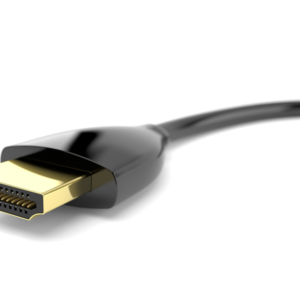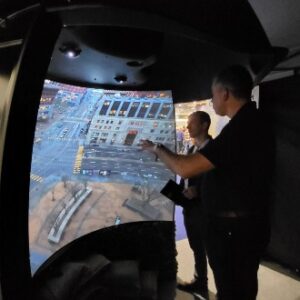With hybridity seemingly the path most considered for future industry shows, virtual iterations have inspired manufacturers and integrators to rethink the traditional trade show model
That 2020 started off as an inspirational year — with many of us setting new goals in line with entering a brand-new decade — only to tumble us all into the worst pandemic in more than a hundred years, will be rightfully examined ad infinitum for the foreseeable future. As the AV industry, both residential and commercial, reckon with the economic impact of pandemic-induced business disruption and closures, our industry organizations were quick to re-examine their in-person events and trade shows and came up with the next best thing: virtual stagings of those events utilizing many of the technologies we often pitch to our end users and clients. This pivoting, as it is so often called, was rightful praised and appreciated, especially by a confined global audience hungry for the engagement that in-person events are meant to offer.
AVIXA and CEDIA, both of which have opted for virtual events this year, were not alone in seeing the opportunity to capture a larger, global audience with this model. Soon, many manufacturers, several of whom had plans to have physical booths at the big annual trade shows, were announcing their own online events, including exclusive product showcases and educational webinars for how to best pitch and use their products during and after the crisis. Among them are Crestron with Crestron Next, which debuts this fall, Atlona’s AtlonaComm 20 and Planar’s Virtual Product & Technology Showcase, both of which were held in June, and Savi’s Savi.Connect event, which will debut next month.
“Hosting your own event is a chance to brand and own the virtual experience,” says Paul Richards, Author and Director of Business Development, PTZOptics and HuddleCamHD, stagers of the upcoming Presence Summit, a full-day presentation of workshops and sessions to help team leaders effectively utilize video communications. “It’s also a great opportunity to associate your existing brand with influencers and thought leaders of your choosing. Hosting your own event means nearly limitless customizability. When virtual events first came about, organizers presented a virtual show floor that merely mimicked a real show experience with avatars representing attendees ‘walking’ around. I’m honestly not a fan of that approach because mimicking a face-to-face event simply doesn’t translate well to virtual events. Instead, virtual events should reinvent the event space and explore what is possible with communication technologies. The simpler and more interactive and engaging your event is, the more attendees will take away from the event, which in most cases also means the better the ROI.”
“Atlona knew when Mobile World Congress in Barcelona cancelled that this would not be a good spring, or even summer, for trade shows,” says Garth Lobban, director of marketing for Atlona. “The impact of the novel coronavirus was quickly felt globally, even as we were onsite at ISE. Come March, in-person gatherings and events were either postponed or cancelled. We pivoted to accommodate the new customer engagement realities from webinars to Teams/Skype/Zoom meetings. By late March, we drew up a “Plan B” in case we lost InfoComm in June. Creating our own virtual event appeared to be the best way to engage our customers, communicate our message, present our new technologies, and offer informative programming.”
Lobban adds that by producing their own event, Atlona has flexibility to manage the marketing triangle — create awareness and drive customer interaction with the ultimate goal of closing the deal — with minimal noise and competitive distraction.
“We also have direct scheduling capability so that end users and our partners — a critical aspect of our sales effort — could directly schedule business meetings and booth tours, using video meeting technology, between their customers and our regional sales reps, system engineers, or product marketing staff,” Lobban says. “It’s at these meetings and tours, with the virtual booth as a backdrop, that the sales team can close the deal; whether it’s to schedule a demo or get the PO — just as we do at an in-person trade show.”
Deeper customer engagement was also the impetus for Savi.Connect, as the company’s CEO, John Dorsey notes, even though Savi also felt it was important to participate in InfoComm Connected in June with a physical booth (built in the company’s warehouse) and panel participation to stay connected with the industry. That same booth will be employed during SAVI.Connect to eschew canned videos and presentations.
“Ultimately, we decided to host our own SAVI-branded event, SAVI.Connect on August 26, because we felt it was the best way to closely replicate the “one-on-one” feel that an in-person demo at a trade show may provide,” Dorsey adds. “We’ve seen throughout the years that expressing the true value of this technology often comes down to witnessing it live at work. Hosting our own virtual event is the most impactful way that we can reveal and introduce a radically new product line to the market. It creates an opportunity to connect with our core audience with less overall noise than at a virtual trade show, while still providing one-on-one, hands-on demos on a smaller, more easily accessible scale.”
Dorsey is on to something. During a recent Digital Signage Digest podcast episode, where the conversation inevitably turned to whether we all will be comfortable attending trade shows in the next 12 months, Artmedia Corp.’s CEO, Eugene Ababio, revealed that before the pandemic he had slowed down on attending trade shows because he was able to get a lot of the information he was seeking online.
“I find a lot of my information sometimes before it even hits InfoComm or any of the trade shows,” Babio says. “I find a lot of my information on Google, where else? What you’re needing, check out manufacturer websites. They’re all anxious enough to make people aware of their new products, do whatever they’re planning on showing at the trade shows. It’s all readily available, honestly. So, because of that — I know a lot of people go for a lot of reasons for the parties, for the drinks, for the free stuff or the connections — but honestly, I used to go because I wanted to find new products and innovative products, but you can find a lot of that online.”
As conversations about if and how we will return to the trade show floor in 2021 continue to swirl, there is also a parallel discussion about what that should look and feel like, especially with the overwhelmingly good attendance achieved by InfoComm Connected and smaller, localized virtual events like Almo Pro AV’s E4v and AVNation’s own Learn From Home Summits. Of course, confinement fatigue should not be underestimated; a captive audience will have its own demands as more people adjust to living and working online and the advantages and limitations of that kind of engagement continue to be dissected. The obvious answer to the trade show question is a hybrid event, especially for international AV industry members for whom travel is both physically and economically prohibitive.
“I’m a huge fan of virtual events, and I’ve made no light of this,” says Frank Padikkala, an AV engineer at integration firm, Diversified, during a recent episode of AVNation’s AVWeek podcast. “I’m of the opinion that this should eventually replace all trade shows. I’m being a little hardcore there, but I feel there is an opportunity here that we have missed out on many years. And I might be one of those positive guys right now who is trying to find the best out of COVID-19, but I think this has forced us to change our perspective and actually look into sales through virtual events as an alternative. I feel there’s a huge market for it.”
Padikkala goes on to say that the biggest winner in an all-virtual event is the end user, especially those outside of the U.S. and developing markets, with the AV integration industry also scoring big with the global introduction of our technologies to end users who would otherwise not know about or have access to them.
“It is not practical at all for some of these people to ever get on a plane,” Padikkala adds. “Or a person like myself; I’m an engineer. If a corporate company, anyone for that matter, I’m not representing my own, but in general, if they were to pick a totem pole who gets to go to a trade show, the engineer would probably be at the bottom of it because, well, I mean the big companies will contact them. Crestrons the Sonys, all these people are going to come to the engineers, but who needs to see it? The salespeople; the people who are upfront in front of clients. But, what if I do want to see it? And that, my friend, COVID-19 has given me the opportunity to take part in Crestron and AVIXA.”
Padikkala’s idea might seem outrageous, but in a time when “normal” is constantly evolving, drastically remaking the trade show model might not be as crazy as it seems. It’s a vision he has shared before and argues, along with Babio, that the AV industry in particular has the technology and the chops to hack and innovate the traditional trade show model — an idea that runs alongside the ongoing remaking of our entire world, in general.
“We’ve been so stuck on keeping things the way they are,” Padikkala says during DSD. “We don’t realize there’s a whole other universe out there that we could have been using. And this could have been done five years ago, four years ago. Sure, the technology needs to evolve. Sure, there are shortcomings. Sure, it’s not going to be as … especially the social component, of a live show. Yeah, it’s not going to be there, but why not? As a design engineer, I deal with two things that I always hold dear to my heart. It’s kind of my guiding principles. I like to innovate and I like to be inclusive. And these two things are answered perfectly by technology. It’s so much easier than to make a trade show floor inclusive. It’s easier to do a virtual trade show for it, make it inclusive than it is a live show.”
Change is slow and familiarity often wins because its comfortable, but integrators, manufacturers and industry organizations agree that live trade shows are still necessary and vital, even as we collectively examine ways to refresh our approach and as Padikkala outlines, expand inclusivity. Both Atlona and Savi think the hybrid model makes sense, with Dorsey noting that it opens the doors to wider exposure for some of the tech that often emerges from our industry, while Lobban is clear that Atlona’s virtual events are adjunct to in-person shows once we all can safely return to the show floor.
2020 is decade-defining year, and while we all missed InfoComm’s showfloor and are gear up for a lively, online staging of CEDIA 2020, industry organizations like AVIXA are listening. AVIXA’s Joé Lloyd perhaps sums up this ongoing conversation best when she outlines what AVIXA is taking away from engagement on the subject: “Well, I think we learned that there’s more to be done to bring the person who’s sitting behind the computer screen, into the room with us and how do we engage everyone together? But it’s not one or the other. If anybody saw during InfoComm Connected … I talked a little bit about how everybody can wear a crown. We can, it is our job to not only educate our buyer, but to educate our partners. And we all have to do that together in the ecosystem.”









